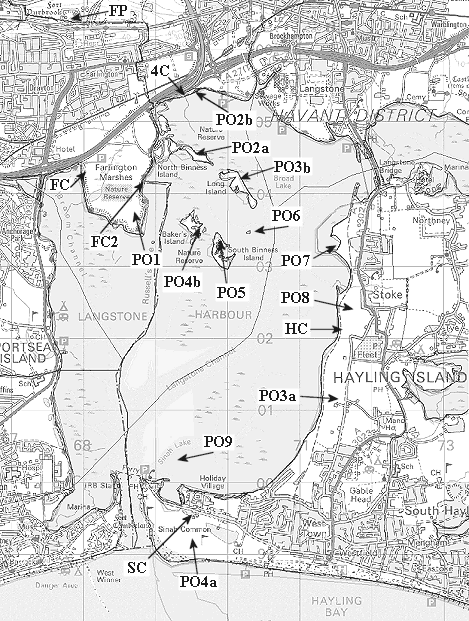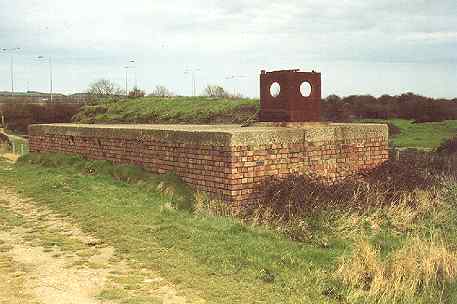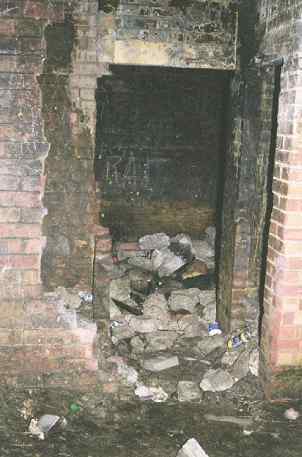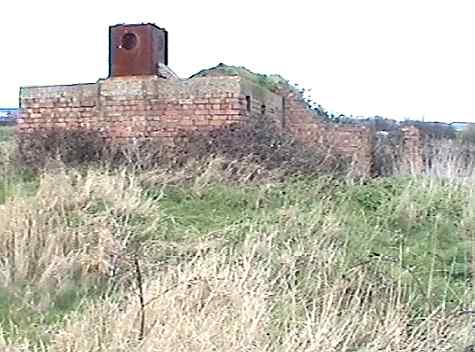|
|
In the autumn of 1940, the mass bombing of Britain's cities - and in particular the devastation wrought on Coventry - turned the attention of Colonel
J F Turner's Air Ministry department to the possibility of providing decoys to divert the bombers away from large urban targets.
What was needed was the replication, as far as was possible, of a city under incendiary attack. It needed fires on a truly legendary scale. And thus was born the fabled Starfish site, the largest, most sophisticated decoy built in the war.
Within days of the raid on Coventry on the night of 14/15 November, work started on the construction of these huge fire-based decoys around Britain's major towns and cities. From Southampton to Glasgow, from Birmingham to Crewe, tons of wood, and indeed anything combustible, was gathered to make improvised bonfires to try and draw some of the bombers away from the centres of population. But although immediately successful in some places, notably Bristol, Derby and Sheffield, these makeshift fire arrangements needed to be improved to guarantee a long-lasting effect with different kinds of fire to give a realistic variety of colour and intensity. If the
Luftwaffe bomber pilots were to be deceived into thinking they were attacking a blazing town, the effects needed to be dramatic, varied and sustainable.
Tests and experiments followed. Using steel tanks, troughs, pipes and grids, fuel could be made to pour, spray or trickle at timed intervals. Different kinds of
flammable materials, variously soaked with boiling oil, paraffin or creosote, could create the random fire effects of burning houses, factories and power stations. Finally, four kinds of fire source which could be "manufactured" were decided upon, and construction
work began.
The Boiler Fire periodically released oil from a storage tank into a steel tray. This was heated by a 10 cwt coal fire which boiled the oil to such a tremendous temperature that it vaporised. When, every now and again, a gush of water was dropped into the tray, the effect was instantaneous and violent with huge flashes of white hot flame leaping up to 40 feet into the air. Storage tanks containing 480 gallons of oil and 200 gallons of water, could keep this dazzling display going for four hours. Some measure of the size of a Starfish site can be gained from the fact that a typical site could contain 12 - 14 Boiler
Fires.
The Grid Fire used paraffin as its base. This was continuously sprinkled onto a hot metal grid to which was attached wire waste and metal turnings. This burned with a steady yellow flame and although not as startling as the Boiler Fire, it introduced the essential element of variety.
Basket Fires were the mainstay of Starfish sites. They came as a 21/2 cwt package of inflammable materials, boxed into a wooden crate measuring 3' x 2' x 2'. Soaked with creosote, these blocks were arranged in irregular groups of up to 24, sometimes even more.
Coal fires were exactly what their name implies, but on a grand scale. A double brazier, twenty feet long, held 4 cwt of creosoted firewood and three tons of lump coal, giving off an enormous deep red glow. A variation of this fed diesel oil onto the burning coals through a sprinkler pipe.
A normal Starfish site could get through 25 tons of fuel in four hours. A few had double this capacity. In common with the lighting decoys and the "QF" sites, the Starfish displays were ignited electrically from a control bunker about 600 yards away. This was heavily built of concrete but, to be on the safe side, it was banked around with earth. Nevertheless, with bombs dropping so close, no doubt the decoy controllers kept their fingers crossed for the bomb-aiming skills of the German
airmen.
By June 1944, decoy sites had been attacked on 730 occasions. Each of these ranged from a single night-time bomber dropping its load onto a "Q"
decoy site to the mass attacks on Starfish sites. In drawing the high explosives and incendiaries on to themselves, they were undoubtedly responsible for saving the lives of thousands of people.
|
|
|
|
|
|
|
To help protect Portsmouth from German
night bombing, a series of 'Q' decoy sites were built in Langstone
Harbour and on Sinah Common Hayling Island. These elaborate constructions
consisted of two main elements. Firstly a string of carefully positioned
structures were erected, mainly in the north of the harbour, which when
lit from the inside would mimic the effect of light shining through chinks
in doors and windows in a carelessly blacked out area. The second, and
most crucial element of the deception plan was the deployment of decoy
fires known as "Starfish" sites. These decoys were designed to
present to the enemy pilots a convincing illusion of a city under
attack.
This site was often dramatically
successful; on the night of 17/18 April 1941, over 140 enemy aircraft were
lured away and un-loaded in excess of 200 air-dropped munitions,
originally intended for the City of Portsmouth, into Langstone Harbour and Farlington
Marshes. This was the most successful Q-site operation of the entire war.
Most of the fires were oil-fuelled and all
were ignited from a central Starfish control point. The master control
post was at Fort Purbrook, a Palmerston Fort located at the east of
Portsdown (hence my interest). Sub-control points were also provided, most of which still
exist.
During the period 1940 - 1944 Portsmouth
suffered 67 air raids with the warning sirens sounding 1,581 times. The
number of air dropped munitions were: 1,320 high explosive, 38,000
incendiaries and 38 parachute mines. 6,625 homes were destroyed with
74,435 damaged. 930 people were killed and 2,837 injured.
|
|
|
|
|
|
|
Langstone Harbour can be a pretty
inhospitable place for any structure, and over the years all trace of the
'Q' lighting, fires and leaky lights have been removed or swept away. When
I was very young, I remember seeing something on the Hayling sands (J in
the above graphic) which looked just like a cut-away sea mine, and inside
were lamp holders still containing electric bulbs. I now guess that this
was a Naval armoured 'leaky light'. Below is a summary of the Control Shelters,
QL, QF and Starfish sites today.
|
|
|
|
| Map Code |
Location |
Condition (2004) |
| FP |
Fort Purbrook |
Fort exists. Control probably
located |
| FC |
Farlington Control |
Still exists. Condition poor |
| FC2 |
Farlington SF Control |
Still exists. Condition fair |
| 4C |
40 Acre Farm Control |
Obliterated by A27(M) road works |
| HC |
Hayling Control |
Still exists. Partly demolished |
| SC |
Sinah Control |
Under investigation |
| PO1 |
Farlington Marshes |
No trace |
| PO2a |
North Binness Island |
Under investigation |
| PO2b |
40 Acre Farm |
Obliterated by A27(M) road works |
| PO3a |
Hayling Island - (W) |
Under investigation |
| PO3b |
Long Island |
Under investigation |
| PO4a |
Sinah Common |
No trace |
| PO4b |
Baker's Island |
Under investigation |
| PO5 |
South Binness Island |
Under investigation |
| PO6 |
Round Nap Island |
Under investigation |
| PO7 |
Old Oyster Beds |
Under investigation |
| PO8 |
Hayling Island - west |
Under investigation |
| PO9 |
Sinah Sands |
No trace |
|
|
|
|
|
|
|
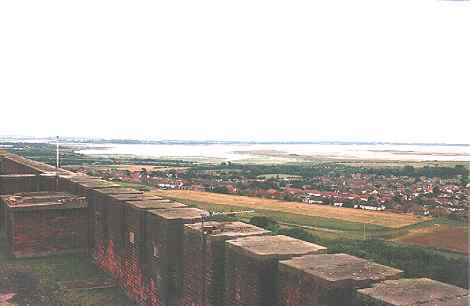
|
|
The
view south east from the top of the Barrack Block inside Fort
Purbrook, which was the Q decoy site main control centre. From here you
can see the entire Q decoy site area: Farlington Marshes, Langstone
Harbour, and Hayling Island. At the lower
left of the photo is a structure thought to be the Q decoy site
observation post.
|
|
|
|
|
|
|
|
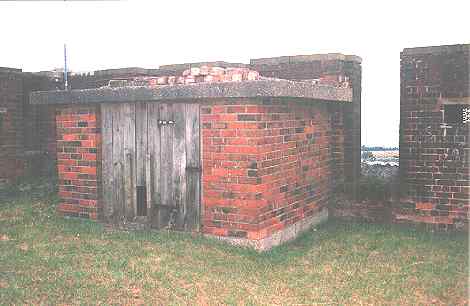
|
|
This
building on top of the eastern end of the Barrack Block at Fort
Purbrook is thought to be part of the main Q decoy site control. There
is evidence that another structure was built upon its roof which
would have given a clear view over the crenellations.
|
|
|
|
|
|
|
|
